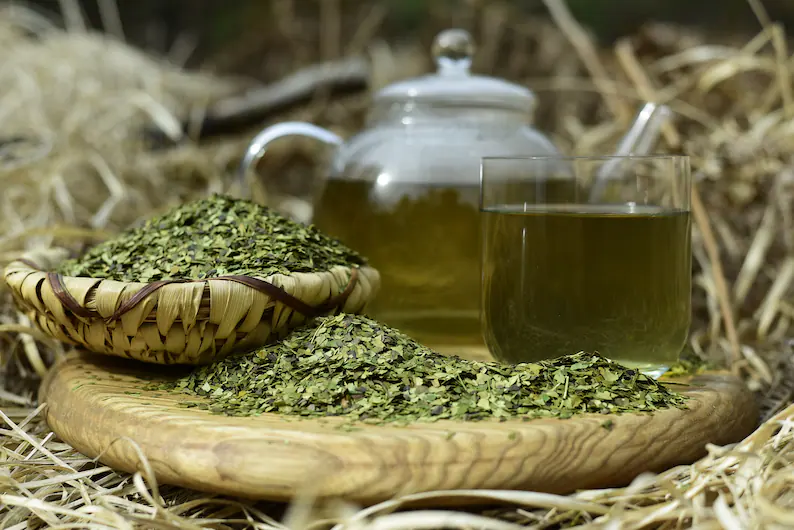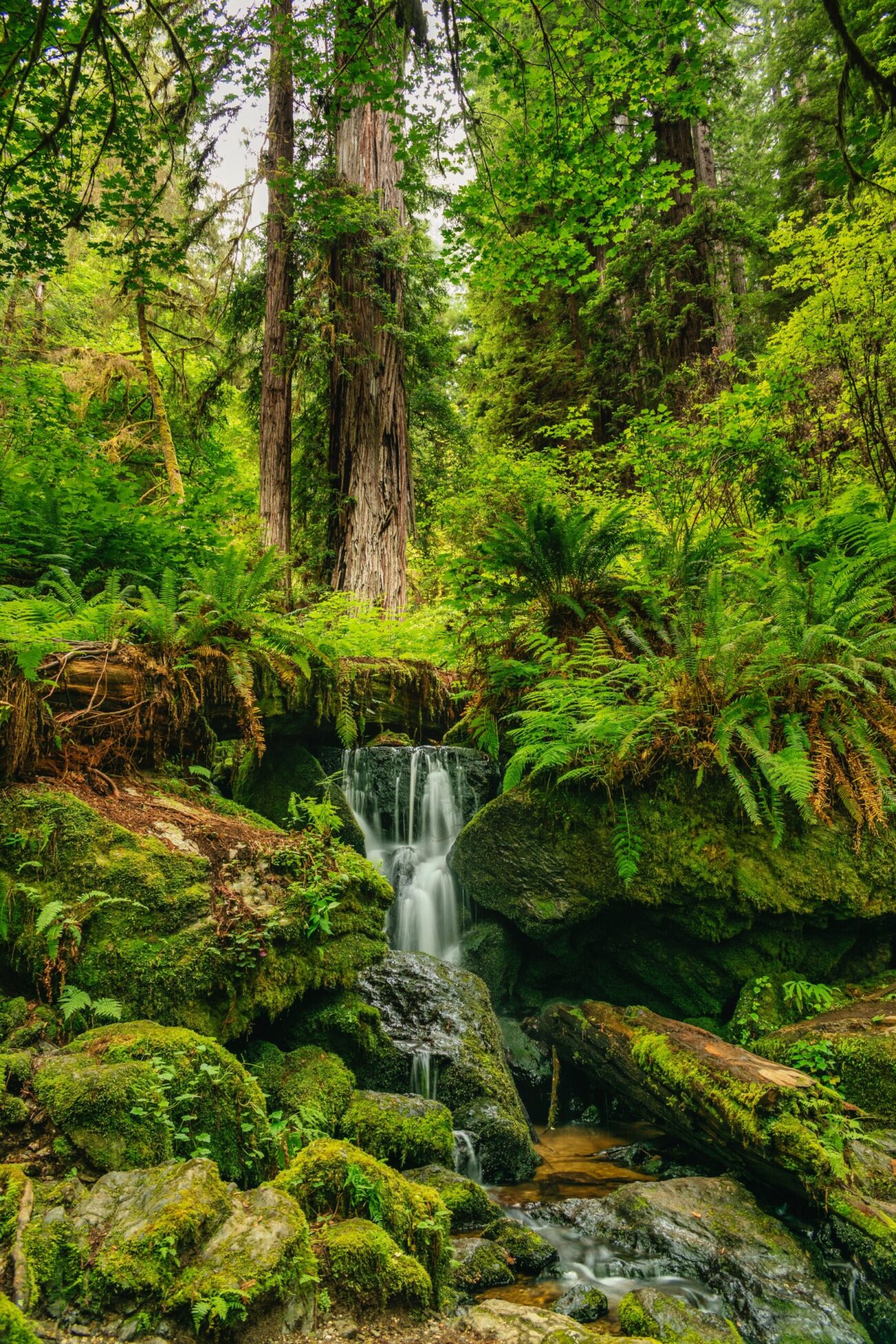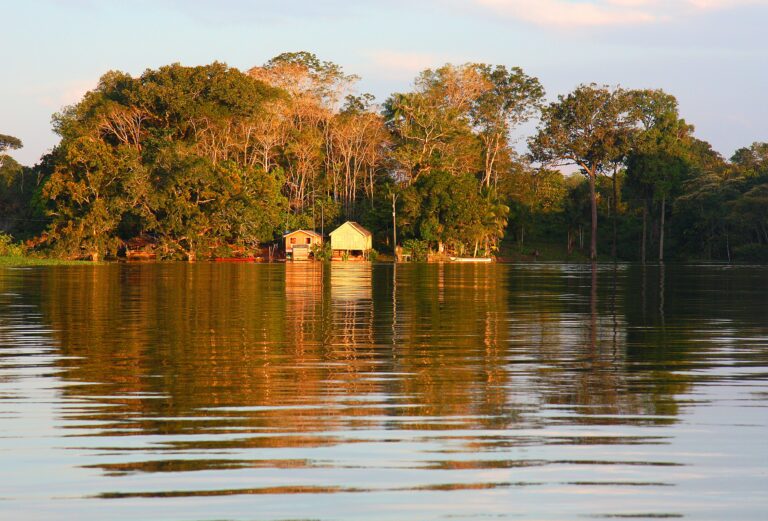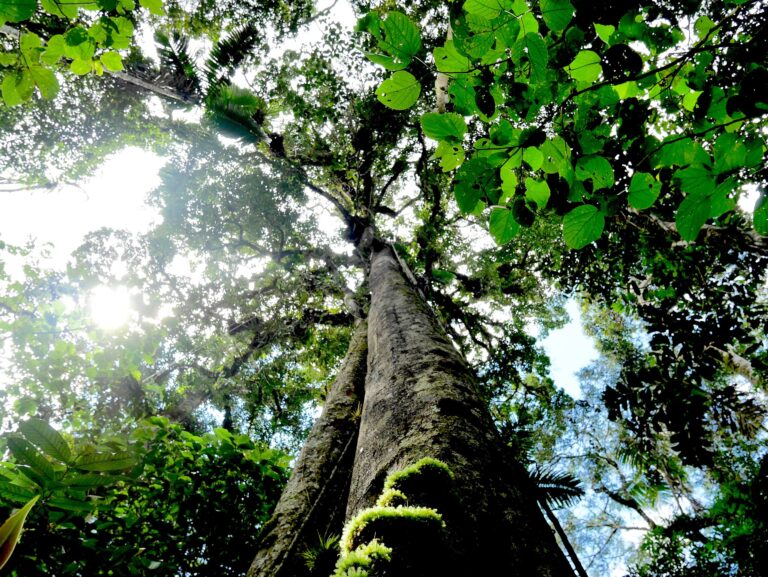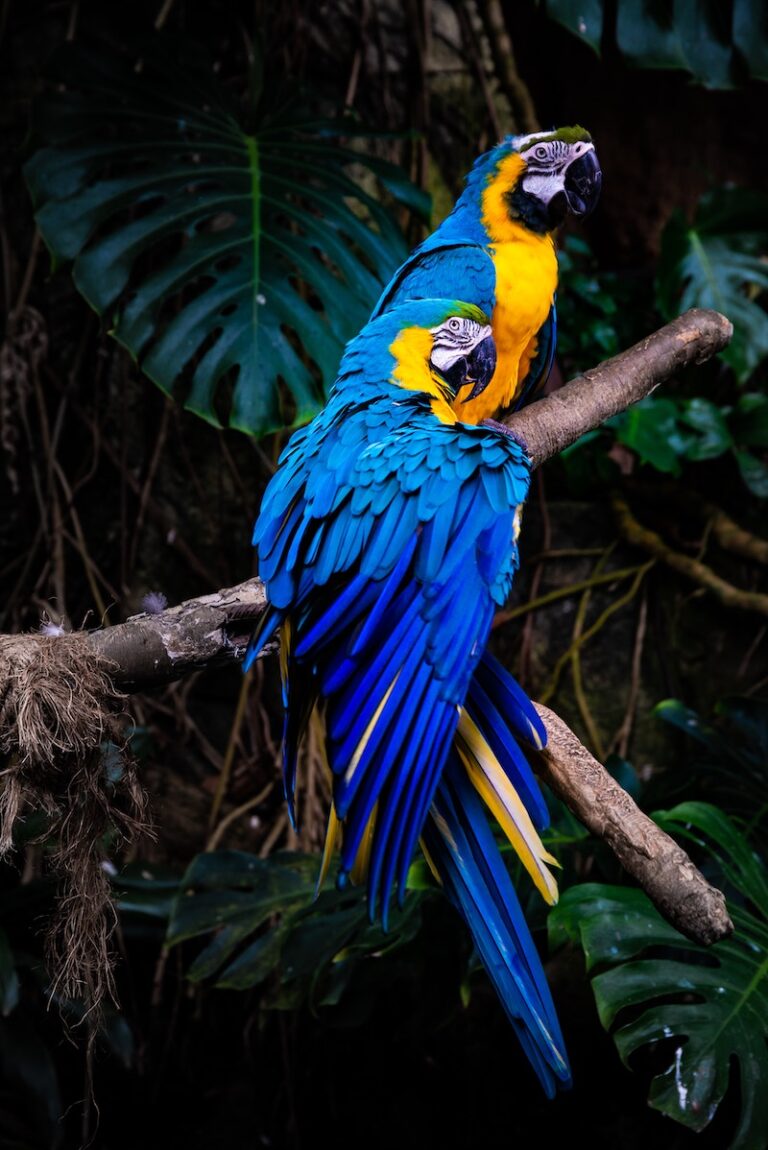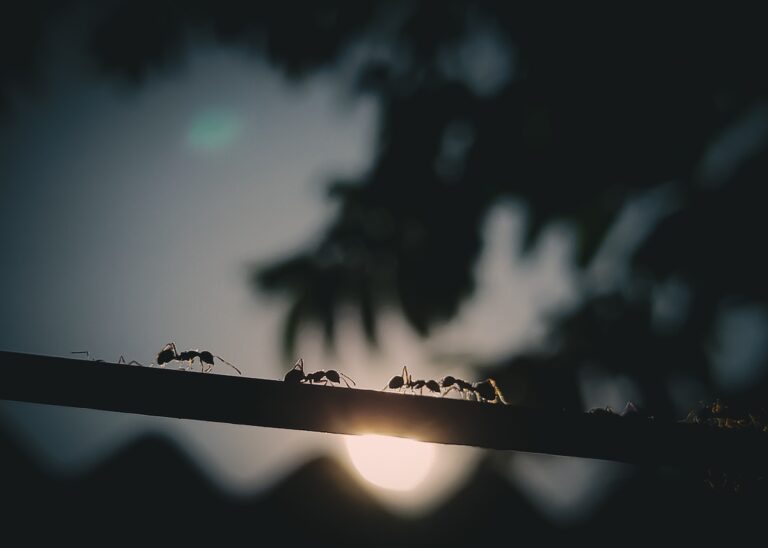The Sacred Beverage
In the jungle communities, there are three elements of the daily tribal life that required personal and continual care and maintenance: the central fireplace to keep the small bonfire going night and day, the high wooden case to keep food and valuables away from pest animals, and a jar with liquid beverages made with either fermentation of local yuca tubers or infusion of familiar leaves.
For the fire, young women venture to the nearby garden chackra to collect twigs, branches, barks, dry leaves, and grasses to help as either fire-starters or fuelwood to keep the flame active when the sooty coals of the previous pyre are dwindling, or to feed and fan the dying flame of the stove.
For the store cellar, made of a small platform of wadua bamboo cuts fixed to a rope that is pulled to secure it suspended over the smoking fire, valuable meat cuts, delicious fruits, and pieces of cooked bark await the daily exposure to the smog generated by the fire below that allow for sparks to ascend towards the central opening of the hut. Smoked wild fish and smoked bush meats are favored staples in the flying bounty of the cellar.
For the “solid” beverages, sometimes the cut leaves of the kuka plant are used to chew when on long hunting journeys, or the chewing gum is made of a whitish sap tapped from diagonal intersecting cuts to the bark of tall Zapote trees. When not stimulating saliva production, pieces of the sap are fused with some leaves, creating a masticated mix that cleans teeth or can even be used to place them in a tooth cavity. As for the liquid beverage, the women of the tribe must go to the garden chakra nearby and harvest the abundant clumped roots of the Yuca shrub or cassava. It is a very hard chore that requires the assistance of several women to pull the roots from the ground, cut them, peel them, and stack them for the journey back home.
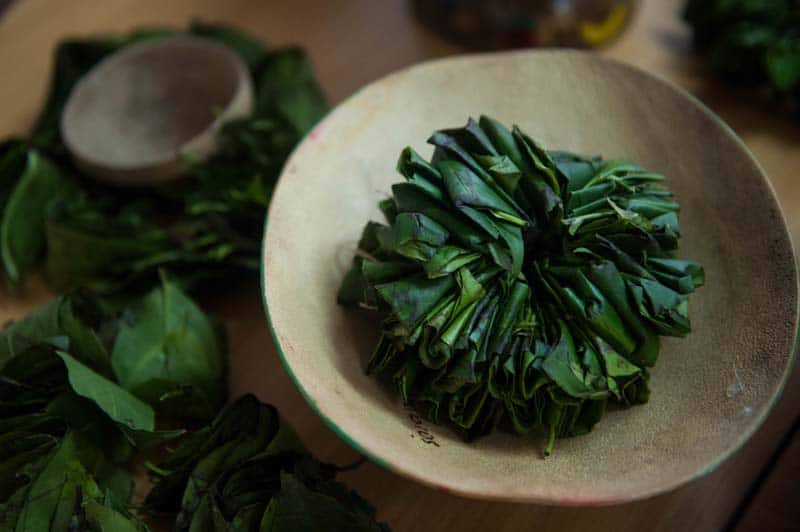
Once inside the hut, women young and all, start chewing at the root and spitting it into a cauldron with water that will accumulate the enzymes of saliva to help with the fermentation of the brewing chicha. Oftentimes, this is a ritualized process involving all members. This energizing drink is shared in their celebrations before the hunting trip, upon returning from the chackra chores, and as a welcoming treat to a visiting foreigner. But, unknown to many outside the jungle, there is a plant that provides a stimulant effect when consumed as an infusion, the famous Wayusa leaf.
Once, in a faraway turn of the meandered Awariku river, there was a young man who did not partake in the games of the group. A rather sad and tall fellow, he often stood near the cliff overlooking the river, with open arms showing his strong five fingers of each hand, taking deep breaths with each crashing of the waves generated by the winds. He was asked to keep an eye on potential enemies trying to steal their bounty of wild meat and produce from the home garden. He also enjoyed watching the numerous macaws and parrots, hauler monkeys, and sometimes peccary or even tapirs that came to leak from the side of the cliff, reaching satisfaction with each piece of mineral ingested. His serenity came to a halt when he realized that two young women were looking at him and sharing mysterious giggles. To capture his attention, one girl took out her dress and started sunbathing at the river edge. The other girl masked herself with the dark sand and fluvial debris and covered her with leaves to disguise her vantage point.
The curious young man approached the scene, not knowing that the two naughty women had been sent by the shaman of the enemy tribe to lure the boy into becoming easy prey for their ambition of conquering their neighbors. As soon as he was within reach, the woman by the shore gave him a wreath of leaves as a token of goodwill. She further told him that if he kept the wreath nearby, he could always remember her in good or bad times.
The other young woman, enchanted by the pleasurable breeze of the river bank where she lay, fell asleep and missed this fortuitous encounter with the tall young man. She was showcasing the typical bronze and brown of the maroon tone, typical of the skin color of the cinnamon tint when exposed to the tropical sun. While she slept, her friend was having an enlightening conversation with the young man, who had seen so much from his observation post that he knew almost everything needed to be known about what happened in the surroundings. They spend hours talking about many things, as if time were not to end. His sadness disappeared while her knowledge increased thanks to the ventures and tales that she now knew.
Suddenly, the big cumulus clouds of the horizon approached rapidly, turning white into gray and then into black, shadowing the jungle below. The shaman had summoned the two women to come back with the prisoner, but they had not responded. Quite the opposite, the slumber of the naked one and the giggles of the blackish-greenish one had kept them oblivious to the passing of the hours. It was with a loud explosion of a bolt that hit at the feet of the tall man that both girls woke up from the enchanting pleasure of resting and learning. The angry wizard of the shaman could not help but give a strong message of disgust for the lack of obedience of the women and the failure of the task they were charged to do. So, bewitching the scene, the strongest, fiercest storm fell over the jungle. It rained profusely during days when the sun could not come out; the river grew and out-banked its borders, creating new alluvial terraces, while the Reventazón flooding continued to bring down broken bridges, old trees, and pieces of the riverine flora floating down with the current.
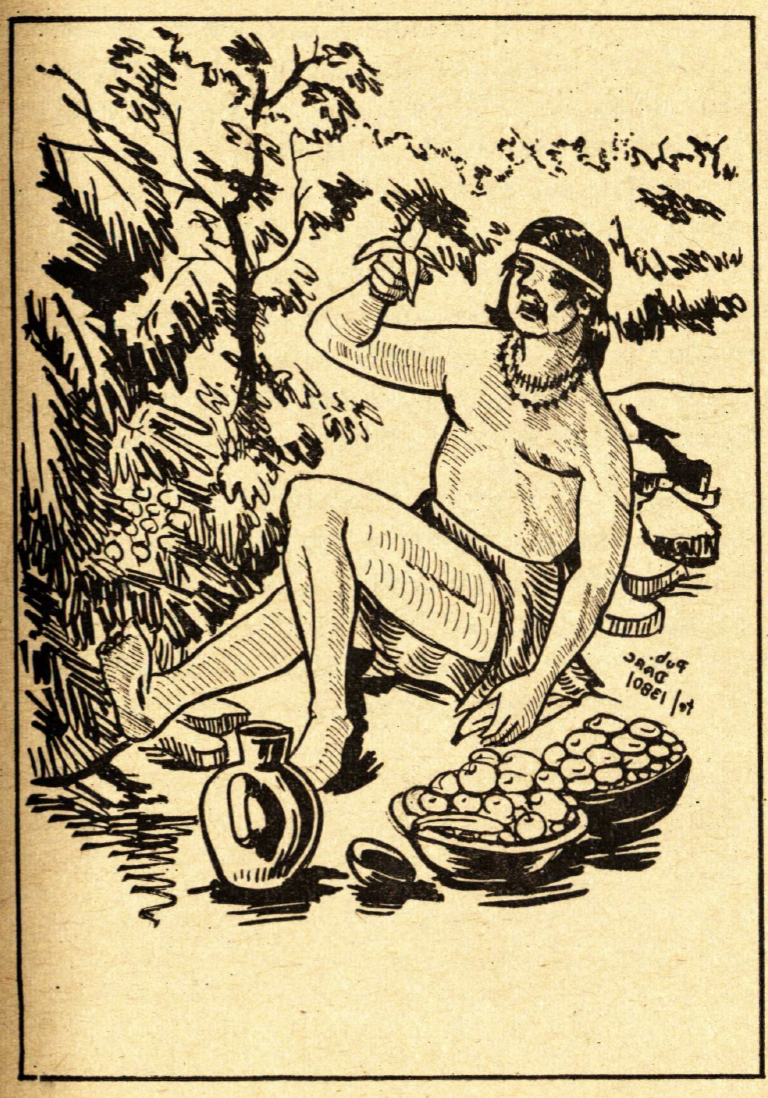
The shaman of the tribe of the tall young man had to retire to the mountain, seeking a strong ayawashka to help with his vision quest that helped with identifying the reason for such a calamity. When he came back from the psychedelic trance, after hearing the advice of the jaguar, the anaconda, and the tapir, he was able to return with a magic potion to fix the problem. Oh, surprise! When reaching the cliff area, the shaman could not find him, or anybody for that matter. Instead of the man, the tallest Ceiba tree in the jungle stood with strong buttresses on each side of the trunk. The pole stood so tall that the canopy could easily be confused with the morning clouds, showing his frond made of five leaves resembling the five open fingers of the young fellow. Nearby, a beautiful, skinny tree stood by the river edge. It was a lone Capirona tree growing slender without a bark to cover her body, with a fantastic shimmering of copper, brown maroon, and cinnamon that decorated and contrasted with the greenery of the riverbank. Also, associated with the tabular roots of the emergent Ceiba tree, there were many sprouting treelets of Wayusa with a profusion of leaves.
This is the reason that people in the jungle have wreaths hanging within their huts, never to be without the satisfying wayusa drink. They often started the day very early in the morning, say 4:00 a.m., before the sunrise, with a warm cup of the jungle tea, in a ceremonial ritual of “wayusada” —when the oldest woman of the community retold orally, sometimes singing, the ancestral tales of her people. They used the infusion for a number of cures of the digestive system; they clean the wounds; they wash their hair; they bathe their bodies; and they drink it toasting for a better future of Amazonia. They must start each day with the blessing of the wayusa inside their bodies to affirm their identity and claim ancestral ties with the forest lands.
Cultural Significance
The holly tree of the upper Amazon of the Napo watershed is known as Ilex guayusa and it is considered as an iconic sacred plant to the Kichwa people in the headwaters of Amazonia. As its relatives in the Appalachian Mountains (Ilex. vomitoria) or in the Paraguayan Sierras chaqueñas (Ilex paraguayensis) they are considered sacred drinks with admirable qualities affecting the health and wellbeing of indigenous Cherokee and Warani peoples respectively.
Full of antioxidants, provides a bust of caffeine without the jittery effect of coffee and allegedly serves to prevent a multitude of maladies and disease, prompting an effect of wellbeing similar to the produced by the cacao beans in chocolate. It is used in every possible fashion and for almost any significant ailments in the jungle.
The beverage is prepared as an infusion of the fresh leaves dried with the smoke from the firepit inside the hut; once dried, they are arranged into a wreath that is then hanged to be exposed to the humid air, and are ready to be cut and ripped into small pieces to be boiled in a pot. The beverage is a very effective agent to tone the body with vigor and to level-off the concentration of other substances that may be difficult to easily digest. In sum, the wayusa has become the stapple stimulant, medicinal, and social drink for the people inhabitant the upper Amazon region.

